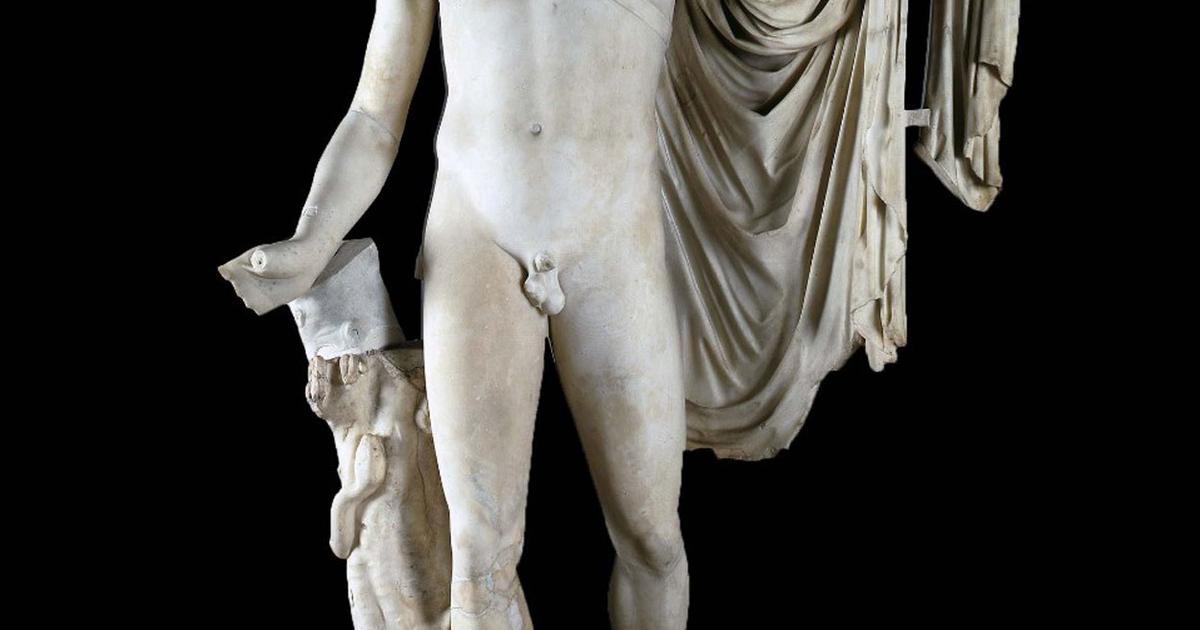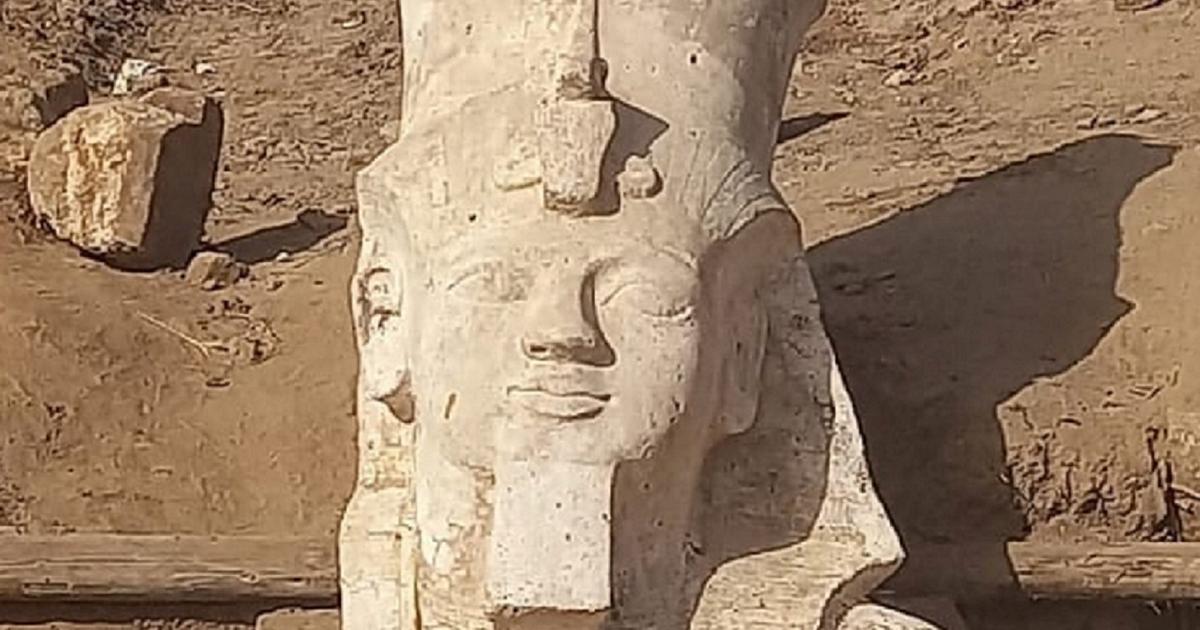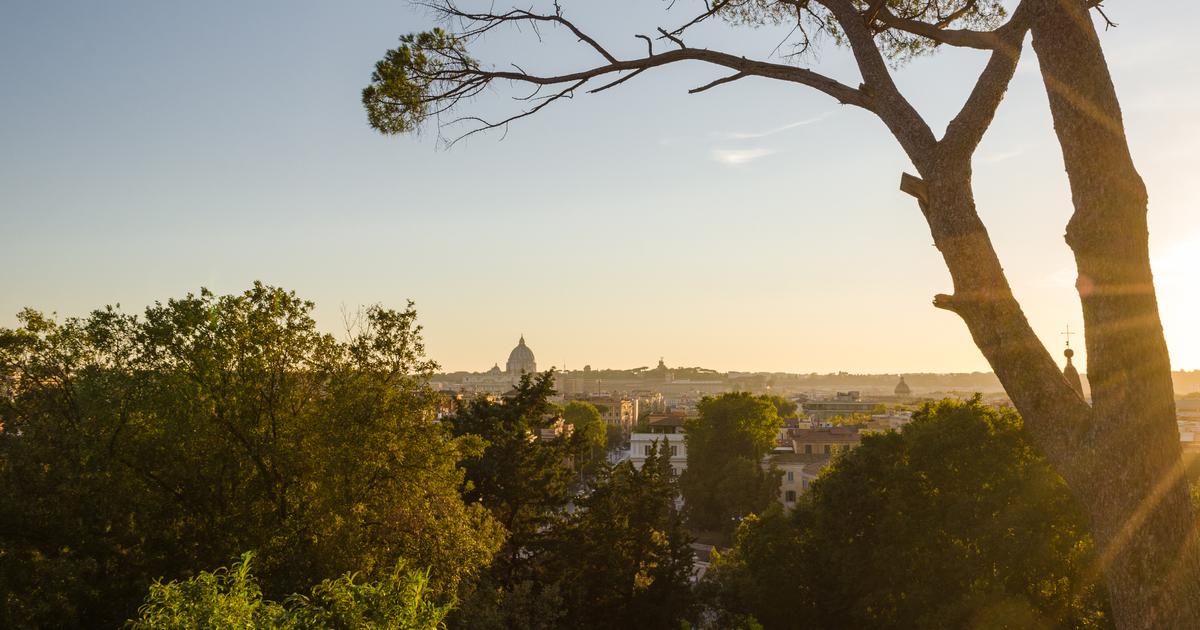The ancient sea monster had carried its tentacles in the Allier, to the depths of the Bourbonnais bocage.
The creature, a newt, emerged from the depths of Roman myths to charm archaeologists who tore it from the earth, in the absence of foam, its Auvergne landmark.
The fabulous figure was presented on Tuesday by the National Institute for Preventive Archaeological Research (Inrap), alongside the other discoveries made a year ago above the ancient Gallo-Roman city of Aquae Nerii, in the town of Neris-les-Bains.
This completely unexpected old ensemble has re-enchanted local archaeological players.
The rectangular fragment in question, about 65 centimeters long, presents a muscular, bearded and hairy man, seen from the front, arms outstretched, sex in evidence.
So far, nothing surprising.
The lower body, however, is also formed by two powerful tentacles which end in fins.
It was neither Neptune nor Jupiter, but a triton, a monster which, together with the Nereids - sea nymphs - was part of the procession of the gods of the sea.
Read alsoThe British Museum is about to conclude “a major agreement” on the return of the Parthenon friezes
“The operation was going to be a very routine search, then at the end of the day we had a big surprise. It's nice to say to yourself that the discoveries of importance have not all been made yet
", rejoices the archaeologist Marie-Laure Thierry, scientific manager of the excavation operation carried out by Inrap, instead- said of the Chemin des Buis.
The block with the miraculous sea creature was discovered last winter by a dozen researchers.
He had been identified in a pit dug on the edge of the excavation area, in which lay about twenty blocks of sandstone.
But it was only a few weeks after the end of the operation, once examined by archaeologists at the Inrap regional repository in Clermont-Ferrand,
Clearance of a Tuscan capital.
Apart from the remains of a funerary monument, discovered on the edge of the excavated area, the archaeologists have notably exhumed a few Gallo-Roman buildings Marie-Laure Thierry, Inrap
“The stone was very degraded, so we preferred not to go karcher there as usual,”
recalls Marie-Laure Thierry.
Careful cleaning with a sponge gradually reveals a sculpted decoration on the surface of the collected lapidary.
And, suddenly, the sea creature reappears under the hand of archaeologists.
"Seeing such a magnificent setting come out, we thought it was a joke, we couldn't believe our eyes,"
laughs the researcher.
It's one of those moments for which we also chose this profession.
Read alsoIn Rochelongue, the mysteries of a 2,600-year-old underwater treasure
The Auvergne triton discovered by Inrap researchers is not the only preserved example of the creature in the world, far from it.
Magnificent representations of the divine creature are preserved on several mosaics - from Herculaneum to Ephesus - as well as on a quantity of bas-reliefs, various pottery and goldsmith's pieces.
The little monster of Néris-les-Bains is no less charming.
"It's quite rare to discover it, which makes it an exceptional find for Auvergne"
, emphasizes Marie-Laure Thierry.
According to the Inrap press release, the figure was sculpted with a certain
"concern for realism",
including a representation of the pectorals - details that a work carried out without care would not bother with.
The Triton and the Mausoleum
The sandstone block with the mythical creature would be part of the remains of a monument erected around the 1st or 2nd century AD.
A second block also recovered from the triton pit, conical in shape and decorated with plant decoration, provided a decisive clue in the identification of this set.
"As it was upside down, we had a lot of trouble understanding what it was
," explains Marie-Laure Thierry with verve.
We had started by interpreting it as a column capital, but its shape was really strange, almost Egyptian, which made no sense in the context of the excavation.
Then, one day while handling it with a colleague, we said to ourselves “mashed potatoes, in fact it is upside down!”.
A real eureka moment.
Proposal for restitution of the funerary monument to which the block with the triton of Néris-les-Bains belonged.
The model is taken from the mausoleum of Glanum, near Saint-Rémy-de-Provence (Bouches-du-Rhône), a well-preserved example dating from the reign of Augustus, at the very end of the 1st century BC.
Inrap
The reversal of the situation delivers the key to reading: a mausoleum.
“In Roman architecture, only these funerary monuments have benefited from this kind of cones”,
specifies the researcher, who gives the example of the mausoleum of Glanum, near Saint-Rémy-de-Provence (Bouches- du Rhône).
The triton fits perfectly into this hypothesis, since the Roman mausoleums of the time were fond of sea monsters.
The right side of the triton block has also preserved the head of a galloping horse, perhaps a sea horse, according to Inrap, which was one of the mounts of the fantastic ocean gods, with the sea bulls and other seahorses.
All this fantastic and Pelagian repertoire evoked, among the Ancients, the journey of the deceased after death.
The great, and last,
Read alsoMarseille, Arles, Paris… The war against archaeological looting is declared
For Marie-Laure Thierry, however, the great unknown lies elsewhere.
Discovered in a pit that has only been partially excavated - because it is on the edge of the perimeter of the site - the blocks of the hypothetical mausoleum seem to have been reused.
The original site of the monument must nevertheless have been in the vicinity… but where?
Probably not on the same site, since it was within the densely populated footprint of the city of Aquae Nerii.
“But mausoleums, like necropolises, can only be found outside cities, for example along the access roads to the city…”,
recalls the archaeologist, pensive.
The issue is all the more sensitive as no Roman mausoleum worthy of the name has yet been discovered in Auvergne.
Future excavations may solve the mystery of the original location of the triton monument.
Since the passage of archaeologists mandated by the Drac Auvergne-Rhône-Alpes, the excavation site has, in any case, given way to a private development project.
A part of the vestiges remained on the spot.
Others, like the sea creature, were rescued from the yard.
Buried for nearly two millennia under solid ground, the newt of Néris-les-Bains should not soon plunge back into oblivion for centuries.







